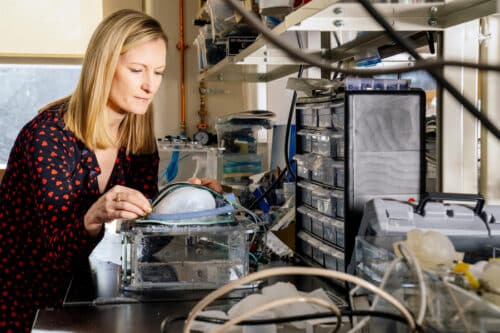Researchers at MIT have developed a soft robot that can help people with chronic diaphragm disease breathe by augmenting its natural contractions.

Breathing comes as natural as fruits on trees. The diaphragm — the dome-shaped muscle that lies just beneath the ribcage — is the major muscle responsible for our ability to breathe. It works like a slow and steady trampoline, pushing down to create a vacuum for the lungs to expand and draw air in, then relaxing as air is pushed out. But when the diaphragm’s function is compromised, the breathing instinct becomes a laborious task.
Chronic diaphragm dysfunction can occur in people with ALS, muscular dystrophy, and other neuromuscular diseases, and damage to the phrenic nerve, which stimulates the diaphragm to contract.
The MIT team has developed a soft, robotic, and implantable ventilator that is designed to augment the diaphragm’s natural contractions. At the heart of the system are two soft, balloon-like tubes that can be implanted to lie over the diaphragm. When inflated with an external pump, the tubes act as artificial muscles to push down on the diaphragm and help the lungs expand. The tubes can be inflated at a frequency to match the diaphragm’s natural rhythm.
The researchers tested the system on anesthetized pigs, implanting the tubes over the animals’ diaphragm, and surgically attaching the ends of the tubes to ribs on either end of the muscle. They monitored the animals’ oxygen levels and observed their diaphragm function using ultrasound imaging.
The team found that the implantable ventilator increased the pigs’ tidal volume, or the amount of air that the lungs could draw in with every breath. The most significant improvement was seen in cases where the contractions of the diaphragm and the artificial muscles were in sync. In these cases, the ventilator helped the diaphragm draw in three times the amount of air than it would without assistance.
The team is working to optimize various aspects of the system, with the goal of some day implementing it in patients with chronic diaphragm dysfunction.









Innovation is always happening in mit